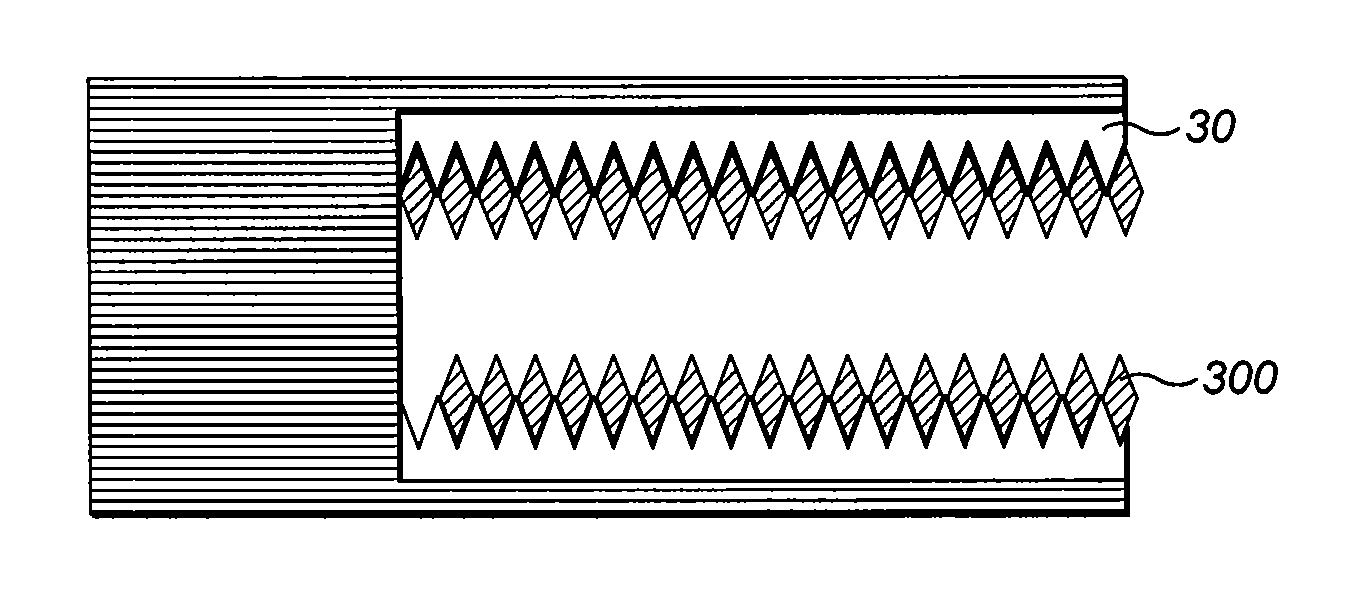Insert for forming an end connection in a uni-axial composite material
a composite material and insert technology, applied in the manufacture of final products, machines/engines, other domestic articles, etc., can solve the problems of flexural mismatch, material contribution to the overall mass, and hence cost, of the blade, and the cost of using more expensive materials, such as carbon fibre composite as required for larger blades, to achieve the effect of convenient reusability of the inser
- Summary
- Abstract
- Description
- Claims
- Application Information
AI Technical Summary
Benefits of technology
Problems solved by technology
Method used
Image
Examples
Embodiment Construction
[0053]For clarity, the winding angle of the fibres 20 is the acute angle that the fibres 20 make with the major axis 11 of the tube10 when the tube 10 is viewed from the side (FIG. 3a). Similarly, the thread angle of the thread cutting tool 12 is the acute angle that the threads 17 make with the major axis 13 of the thread cutting tool 12 when the thread cutting tool is viewed from the side (FIG. 3a). For the purposes of clarity in the Figures, only fibres 20 having a winding angle of approximately ±θ are illustrated in FIG. 3a. However, it will be understood that the tube 10 comprises fibres 20 having a winding angle of approximately ±θ.
[0054]In one example, the tube 10 may comprise standard e-glass and epoxy resin. However, any other suitable fibre composite material may be used such as e-glass and polyester or vinylester resin or carbon or aramid fibres.
[0055]FIG. 3b shows the filament wound fibre composite tube 10 during a thread tapping process. During the thread tapping proces...
PUM
| Property | Measurement | Unit |
|---|---|---|
| diameter | aaaaa | aaaaa |
| pullout force | aaaaa | aaaaa |
| thickness | aaaaa | aaaaa |
Abstract
Description
Claims
Application Information
 Login to View More
Login to View More - R&D
- Intellectual Property
- Life Sciences
- Materials
- Tech Scout
- Unparalleled Data Quality
- Higher Quality Content
- 60% Fewer Hallucinations
Browse by: Latest US Patents, China's latest patents, Technical Efficacy Thesaurus, Application Domain, Technology Topic, Popular Technical Reports.
© 2025 PatSnap. All rights reserved.Legal|Privacy policy|Modern Slavery Act Transparency Statement|Sitemap|About US| Contact US: help@patsnap.com



